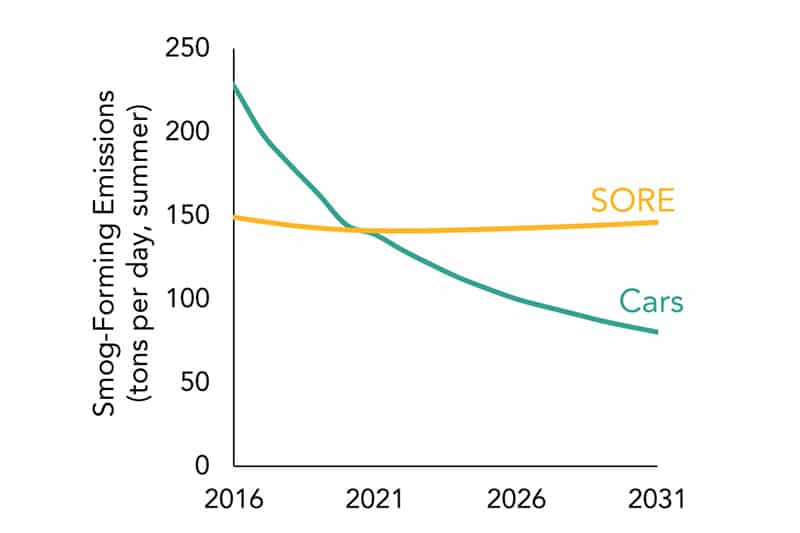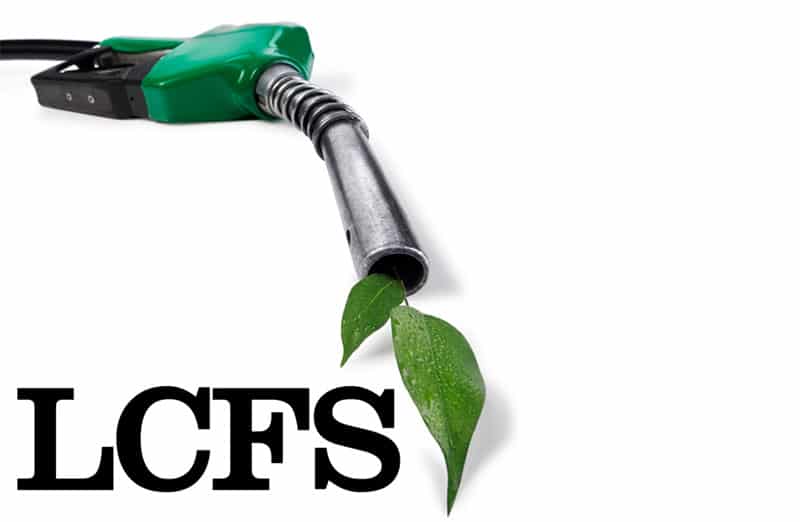All portable engines having a maximum rated horsepower of 50 bhp and greater and fueled with diesel are subject to this regulation.
The following portable engines are not subject to this regulation:
- Any engine used to propel mobile equipment or a motor vehicle
- Any portable engine using an alternative fuel;
- Dual-fuel diesel pilot engines that use an alternative fuel
- Tactical support equipment;
- Portable diesel-fueled engines operated on either San Clemente or San
Nicolas Island;
- Engines preempted from State regulation under 42 USC §7543(e)(1); and portable diesel-fueled engines operated at airports that satisfy the following requirements:
(A) the equipment is subject to the South Coast Ground Service Equipment Memorandum of Understanding (MOU); and (B) the participating airlines have demonstrated to the satisfaction of the Executive Officer that the diesel PM reductions achieved by satisfying the requirements of the MOU are equivalent to the reductions achieved by this control measure.
- 93116.3 Requirements.
Diesel-fueled portable engines shall only use one of the following fuels:
CARB diesel fuel; or alternative diesel fuel or CARB diesel fuel utilizing fuel additives
Requirements for in-use portable diesel-fueled engines
Starting January 1, 2010, all portable diesel-fueled engines shall be certified to meet a federal or California standard for newly manufactured nonroad engines pursuant to 40 CFR Part 89 or Title 13 of the California Code of Regulations (that is, certified to Tier 1, 2 or 3 nonroad engine standards). In lieu of complying with the above owners of portable diesel-fueled engines used exclusively in emergency applications or portable diesel-fueled engines that qualify as low-use engines, 80hrs or less per year, may commit to replacing these engines with Tier 4 engines.
- the Responsible Official shall submit written notification identifying the specific portable diesel-fueled engines to be replaced with portable diesel-fueled engines certified to the Tier 4 emission standards; and
- for each class and category of nonroad engine, replace each portable diesel-fueled engine so identified within two years of the first engine being offered for sale that satisfies the Tier 4 emission standards.
Portable diesel-fueled engines that have not been permitted or registered prior to January 1, 2006, are subject to the following requirements:
- The portable diesel-fueled engine shall meet the most stringent of the federal or California emission standard for nonroad engines; or a diesel-fueled portable engine used exclusively in emergency applications or qualifying as a low-use engine designation may only be permitted or registered by a district.
Portable diesel-fueled engines used exclusively in emergency applications or qualifying as low-use engines shall satisfy one of the following requirements by January 1, 2020:
The portable diesel-fueled engine is certified to Tier 4 emission standards for newly manufactured nonroad engines; or the portable diesel-fueled engine is equipped with a properly functioning level-3 verified technology; or the portable diesel-fueled engine is equipped with a combination of verified emission control strategies that have been verified together to achieve at least 85% reduction in diesel PM emissions.
An engine owner, operator, dealer, or distributor may permit or register an engine not meeting the most stringent emission standard providing the following are met:
(A) The engine met the most stringent emission standard in effect prior to the change for that horsepower range; and
(B) The application for permit or registration of the engine is submitted within six months of the effective date of the change in emission
standards.
Fleet Requirements
Each fleet is subject to and shall comply with the following weighted PM emission fleet averages expressed as grams per brake horsepower-hour (g/bhp-hr) by the listed compliance dates:
| Fleet Standard
Compliance Date
|
Engines
(g/bhp-hr)
|
Engines 175 to
750 hp (g/bhp-hr)
|
Engines >750 hp
(g/bhp-hr)
|
| 1/1/13 | 0.3 | 0.15 | 0.25
|
| 1/1/17 | 0.18 | 0.08 | 0.08
|
| 1/1/20 | 0.04 | 0.02 | 0.02 |
For the purposes of this regulation, the portable diesel-fueled engines affected by the fleet provisions of this regulation include all portable diesel-fueled engines operated in California, including portable diesel fueled engines registered with the Statewide Portable Equipment Registration Program or permitted by or registered with a district.
The following portable diesel-fueled engines shall be excluded from the fleet requirements:
- portable diesel-fueled engines operated exclusively outside of California or operated only within the OCS.
- portable diesel-fueled engines used exclusively in emergency applications.
- portable diesel-fueled engines that qualify as low-use engines.
- portable diesel-fueled engines used in a lattice boom crane.
The diesel PM fleet emission standards in section 93116.3(c)(1) do not apply to:
- portable diesel-fueled engines equipped with properly operating SCR systems as of January 1, 2004.
- portable diesel fueled engines equipped with properly operating SCR systems after January 1, 2004.
At the request of the Responsible Official, portable diesel-fueled engine(s) equipped with a SCR system(s) may be included in the company’s fleet for the purpose of complying with an applicable fleet emission standard. Once the engine(s) is included in a fleet, compliance with applicable fleet emission standards shall always include these diesel-fueled portable engine(s).
For all diesel-fueled portable engines equipped with SCR systems, test results for NOx, PM, and ammonia slip shall be submitted to the Executive Officer to demonstrate that the SCR system is operating properly:
Beginning on January 1, 2013, the weighted average PM emission rate for the fleet cannot exceed the fleet standard that is in effect. Changes in the fleet, including portable engine additions and deletions, shall not result in noncompliance with this standard.
The following incentives may be used to revise the fleet average, as outlined below:
Where equipment uses grid power for more than 200 hours in lieu of operating a portable diesel-fueled engine for a given project, the time period grid power is used may be used to reduce each affected engine’s emission factor. The emission factor for each affected portable engine will be reduced proportionally by the percentage of time the equipment uses grid power. To receive credit for grid power in the fleet calculation, the record keeping and reporting requirements in section 93116.4(c)(3) shall be satisfied.
Alternative-fueled portable engines operating 100 or more hours may be included toward determining compliance with the applicable fleet emission standards. A diesel PM emission rate of zero shall be used in the fleet calculations for these engines.
Alternative-fueled portable engines operating 100 or more hours per calendar year and added to a fleet prior to January 1, 2009, may be counted twice in the company’s fleet average determination toward compliance with the 2013 and 2017 fleet emission standards. The alternative-fueled engine shall be certified to meet a federal or California standard for newly manufactured nonroad engines pursuant to 40 CFR Part 89 or Title 13 of the California Code of Regulations.
Portable diesel-fueled engines certified to Tier 4 nonroad engine standards that are added to a fleet prior to January 1, 2015, may be counted twice in the company’s fleet average determination toward compliance with the 2013 and 2017 fleet emission standards.


